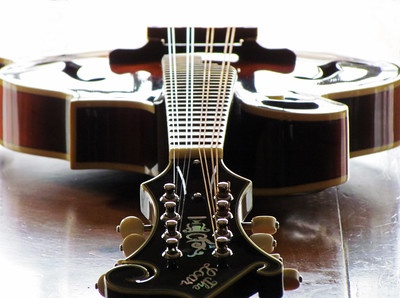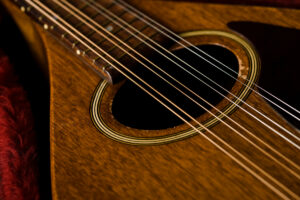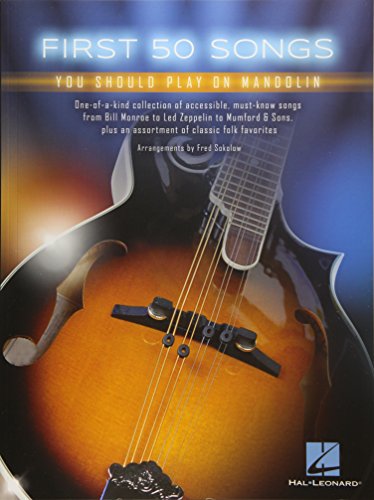The old saying, “Good things come in pairs” is absolutely true. Two is a number of harmony and balance. Think of ice skates, mittens, earbuds, bookends, and so many other examples.
The mandolin is no exception here.
This stringed instrument is composed of coupled metal strings that are tuned in pairs. If you’re wondering how many strings a mandolin has, the answer can vary, as we’ll detail in the article. But in most types of mandolins (with the tricordia being a notable exception), there is a constant: strings occur in pairs.
In music terminology, a “course” refers to one, two, or several strings that are placed close together on the neck of a stringed instrument and are often played in unison.
| Number Of Strings | Type |
|---|---|
| 4 | Go Down Low |
| 6 | Lombardy Bowlback |
| 8 (Classic) | Most Common |
| 10 | Slight Variation |
| 12 | Tricordia |
| 16 | Max |
In mandolins, a course typically consists of two strings that are played as if they were one.
Mandolins most commonly have four pairs of strings (or four courses), making eight strings total, but there are plenty of iterations that have been used historically and are still sometimes used today. These varieties include, for example, five and six course mandolins.
No matter how many strings a mandolin has, the instrument can be played with a flat tool called a plectrum, or by strumming the strings with the fingers.
Without further ado, let’s dive into this fascinating instrument and answer the question, “How many strings does a mandolin have?” We’ll start with the smallest number (four strings), discuss the most classic and popular types, and end with the highest number of strings (a whopping sixteen)!
Table of Contents
- Four String Mandolins: Go Down Low
- Six String Mandolins: Lombard Bowlback
- Eight String Mandolins: Classic
- Ten String Mandolins: A Slight Variation
- Twelve String Mandolins: Tricordia
- Sixteen String Mandolins: Take It To The Max
- Final Note
- FAQs
Four String Mandolins: Go Down Low
Mandolins can go as low as four strings, though this type is not very common at all. In this case, the instrument is composed of two pairs of strings and is tuned in unison. A very minimal and simplistic sound is produced, since the number of chords that can be made is very limited.
PRO TIP: Whichever one of these string variations you go with, don’t forget to pick up a multi-instrument tuner that actually works well with a mandolin. This micro headstock tuner fits that bill.
Six String Mandolins: Lombard Bowlback
This type of mandolin originated in the Italian cities of Milan and Lombardy, and likely preceded the eight string model that is now considered classic. They are shorter and stockier than the traditional Neopolatin mandolin.
Mandolins originating from these Italian cities have only three courses of two strings each, making for six strings total. They contain three wire treble strings plus three gut or wire wrapped silk strings.
The two different string types on this instrument give it a unique and coveted sound.
Even though each course consists of two slightly different strings, one being solid wire and the other being gut wrapped, tuning still occurs in unison. There is a greater depth of sound produced because of the slight variation present in each course.
PRO TIP: When it comes to mandolin strings, it’s not rocket science – trust the top brands. This set of strings is D’Addario’s bestselling mandolin set.
Eight String Mandolins: Classic
Classic mandolins have eight strings, consisting of four pairs. These mandolins first evolved from the lute family in Europe, and they possess features of many of their predecessor instruments like the gittern and mandore.

Today, the earthy sound of mandolins is very popular in folk music. A couple of unique features set the mandolin apart from other instruments, and give it such a sought-after sound.
Mandolins, like other plucked instruments, make distinct music because the sound of their notes quickly decays into silence. This is different from the ringing effect created from playing instruments with a bow, like the violin.
PMV Top Pick – If you’re going with the classic 8-string setup, this mandolin is one of our top picks thanks to the trusted brand name and the 3 different varieties of sunburst finish that you can choose from.
- A-style mandolin
- Select spruce top
- Mahogany back & sides
- Chrome hardware
- Pearl Dot Inlay
Why Does a Mandolin Have 8 Strings?
The mandolin has 8 strings arranged in pairs because this configuration provides a unique sound and allows for a wide range of notes to be played on the instrument. The doubled strings also give the mandolin its characteristic “chop” or “jangle” sound that is often heard in bluegrass and folk music. On top of that, the 8-string configuration has become the standard for the mandolin over time, making it easier for musicians to learn and play the instrument.
Most traditional bowlback mandolins fall into the eight string category, including the standard Neapolitan model. Keep reading to learn about the other varieties that also exist, though.
For these reasons, the classic 8-string variety of mandolin should probably be where beginners start.
Ten String Mandolins: A Slight Variation
There are varieties of mandolins that are composed of five pairs of strings all tuned in unison. Adding a new course (compared to the typical four courses) increases the number of harmonies that a player can utilize when making music. Often the neck will need to be a little wider as the number of strings on the mandolin increases.
In the ten string mandolin, each course still consists of two strings, and tuning is still performed in unison in order to maintain the pleasant sound when the instrument is played. The Algerian mandole is one example of a mandolin that commonly has ten strings.
Twelve String Mandolins: Tricordia
The tricordia is a variation of the mandolin that originated in Mexico. The tricordia has several key differences that distinguish it from its European cousin.
Most importantly, the tricordia actually has twelve total strings. The tricordia differs from other mandolins because instead of strings occurring in pairs, they occur in triplets. Therefore, tricordias have three strings per course, hence the name.
This instrument is often used in Mexican folk music and can be tuned in unison or octave, which again separates it from the rest of the mandolin family, as they are only tuned in unison.
Sixteen String Mandolins: Take It To The Max
The maximum number of strings that a mandolin can have is sixteen. Again, this type is very rare. These instruments have very wide necks to accommodate the extra courses.
- Music book contains these mandolin songs:
- Angeline The Baker
- Au Clair De La Lune
- Bill Cheatham
- Series: First 50 Format: Softcover Arranger: Fred Sokolow Inventory #HL 00155489 ISBN: 9781495056635 UPC: 888680600495 Width: 9.0″ Length: 12.0″ 112 pages
- A fantastic collection of 50 accessible, must-know favorites for the beginner who’s learned enough to start playing popular songs! This book features melody, lyrics, and chord diagrams
- Includes: Amazing Grace Blue Eyes Crying in the Rain Crazy Cripple Creek Folsom Prison Blues Friend of the Devil Going to California Hallelujah Ho Hey I Am a Man of Constant Sorrow I Walk the Line I’ll Fly Away Losing My Religion Maggie May Mr
- Bojangles Redemption Song Ripple Rocky Top Take Me Home, Country Roads Tennessee Waltz Wagon Wheel Wildwood Flower Yesterday Your Cheatin’ Heart and many more
- Casey, Bert (Author)
- English (Publication Language)
- 56 Pages – 01/05/2018 (Publication Date) – Independently published (Publisher)
Final Note
As you can see, there is a rainbow of diversity that exists in the mandolin world when it comes to the number of strings and courses. Mandolins are most commonly strung with courses that consist of two strings each. No matter how many strings your mandolin has, you can still make it sing with beautiful music.
At the end of the day, the ideal string number really comes down to personal preference. If you’re not sure where to start, take some time to appreciate variations of the mandolin that have emerged all over the world, and that aren’t centralized to its European origins.
Different countries in Asia, Africa, and North America have developed some very interesting variations with different numbers of strings that are still very pleasing to the ear, and they’ve become an important part of history and culture.
With that being said, happy plucking!
FAQs
How many strings does a mandolin have?
A mandolin typically has 8 strings arranged in pairs, known as courses.
Are all mandolins 8-stringed instruments?
No, some mandolins may have additional strings, but the standard configuration is 8 strings.
What is the tuning for a mandolin?
The most common tuning for a mandolin is G-D-A-E, with each pair of strings tuned to the same pitch.
Can a mandolin be played like a guitar?
While the basic principles are similar, the mandolin is played differently than a guitar due to its smaller size and unique tuning.
What type of music is typically played on a mandolin?
Mandolins are commonly used in folk, bluegrass, and classical music, but can be found in many other genres as well.
Can a mandolin be used for solo performances?
Yes, mandolins are often used as solo instruments due to their distinctive sound and versatile range.
How long does it take to learn to play the mandolin?
The time it takes to learn to play the mandolin depends on various factors such as practice time, prior musical experience, and natural ability.
What is the difference between a mandolin and a mandola?
A mandola is a larger version of the mandolin, typically tuned lower than a mandolin and with a deeper tone.
How often do I need to change the strings on my mandolin?
It’s recommended to change the strings on a mandolin every 2-3 months or whenever they become worn or lose their tone.
Can left-handed people play a mandolin?
Yes, left-handed mandolins are available, but it’s also possible to play a right-handed mandolin upside-down if necessary.







